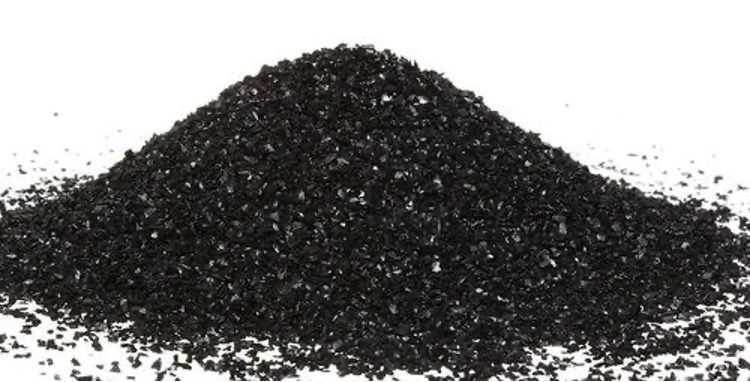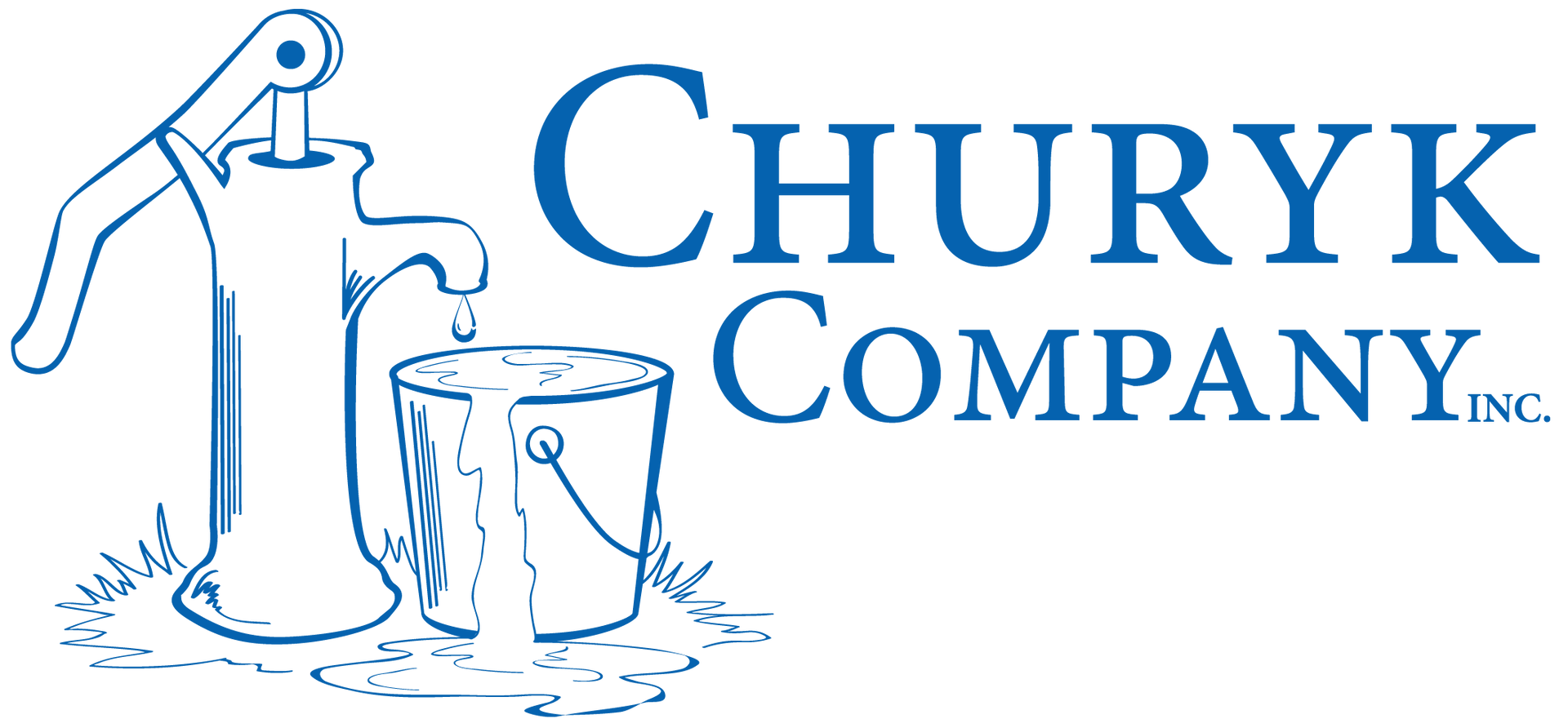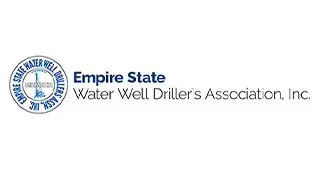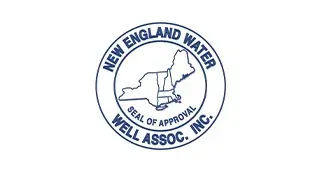Water Issues: PFAS
PFAS (perfluorinated alkylated substances) are a group of man-made chemicals that have been widely used in various industrial applications and consumer products for decades. These persistent chemicals can contaminate water sources, leading to potential health risks. At Churyk Company, Inc., we recognize the importance of addressing PFAS contamination to ensure your water supply is safe.
PFAS, or perfluorinated alkylated substances, also known as “forever chemicals,” are used in the manufacturing of many consumer products and are resistant to biodegradation. However, they are bioaccumulative, meaning they can build up in the bloodstream and organic tissues. PFAS also dissolve in water, and combined with their chemical properties mean traditional drinking water treatment technologies are not able to remove them. Therefore, EPA researchers have been studying a variety of technologies to determine which methods work best to remove PFAS from drinking water.
New York State has had enforceable public drinking water standards for two common PFAS compounds, PFOA and PFOS, since 2020. The United States Environmental Protection Agency
(EPA) also has recently issued the first-ever national, legally enforceable public drinking water standards for PFOA, PFOS and other PFAS, which will be enforceable in 2029. Certain PFAS are linked to serious health risks including cancer, liver and heart disease, and developmental harm to infants and children. The EPA regulation aims to reduce PFAS exposure for roughly 100 million Americans, potentially preventing thousands of deaths and reducing numerous serious illnesses.
For communities like Pound Ridge, complying with drinking water regulations could impose significant remediation costs to businesses, which supply drinking water to the public. WCDOH, in conjunction with NYSDOH, require public water suppliers to take steps to lower the levels to meet the New York State standards. Fortunately, filtration systems to reduce PFAS in groundwater are available and can be installed to address this contamination concern.
While New York State does not regulate PFAS in private wells, the NYSDOH encourages private well owners to test their water regularly for contaminants and maintain their wells. PFAS testing involves specialized procedures and must be conducted by trained personnel and certified laboratories.
It is important to note that while PFAS contamination is a concern across the county and statewide, exceeding the maximum contaminant levels (MCLs) set for public water systems does not imply an immediate health risk but necessitates actions to reduce these levels progressively.
Churyk always recommends a water test initially, but if you find out you have PFAS in your water, we have solutions to treat it!
Churyk Company Solutions to Remove PFAS in Drinking Water
Reverse Osmosis Installation
Reverse osmosis (RO) is a water purification technology that uses a semipermeable membrane to remove ions, molecules, and larger particles from drinking water. In reverse osmosis, an applied pressure is used to overcome osmotic pressure, a colligative property, that is driven by chemical potential differences of the solvent, a thermodynamic parameter. Reverse osmosis can remove many types of dissolved and suspended species from water and is used in both industrial processes and the production of potable water. The result is that the solute is retained on the pressurized side of the membrane and the pure solvent is allowed to pass to the other side. To be “selective”, this membrane should not allow large molecules or ions through the pores (holes), but should allow smaller components of the solution (such as solvent molecules) to pass freely.
In the normal osmosis process, the solvent naturally moves from an area of low solute concentration (high water potential), through a membrane, to an area of high solute concentration (low water potential). The driving force for the movement of the solvent is the reduction in the free energy of the system when the difference in solvent concentration on either side of a membrane is reduced, generating osmotic pressure due to the solvent moving into the more concentrated solution. Applying an external pressure to reverse the natural flow of pure solvent, thus, is reverse osmosis. The process is similar to other membrane technology applications. However, key differences are found between reverse osmosis and filtration. The predominant removal mechanism in membrane filtration is straining, or size exclusion, so the process can theoretically achieve perfect efficiency regardless of parameters such as the solution’s pressure and concentration. Reverse osmosis also involves diffusion, making the process dependent on pressure, flow rate, and other conditions. Reverse osmosis is most commonly known for its use in drinking water purification from seawater, removing the salt and other effluent materials from the water molecules.
Understanding How Reverse Osmosis Works
Reverse osmosis can tame some very challenging water by reducing dissolved solids levels by almost 100% and removing arsenic, nitrates, and lead, and other problem contaminants, but the RO membranes themselves must be protected from contaminants like iron, hardness, manganese, turbidity, silica, and chlorine. Pretreatment can require an iron filter, a water softener, sediment filtration and/or chemical scale inhibitors. Pretreatment is not optional. Although the RO unit can itself remove the calcium that causes hardness scaling, untreated hardness will eventually scale the membrane, and membrane replacement is costly. Keep that in mind when considering a whole house RO installation. Consider, too, that iron filters and softeners have to be allowed some time to regenerate themselves when the RO unit is not running. This can affect sizing.
RO water is naturally low in pH, so it often a good idea to send it through a small neutralizing filter (usually calcite) to bump the pH back into the 7 range. This protects plumbing fixtures and can make the water more aesthetically pleasing. Also, after the water has been stored in a tank, a small carbon postfilter will improve the taste. Finally, an ultraviolet lamp can assure safe, bacteria-free water. Calcite, carbon filters, and UV are all optional, but you should consider them seriously.

FILTRASORB® Granular Activated Carbon (GAC)
FILTRASORB® granular activated carbon (GAC) has proven an effective and reliable option for the removal of both short and long-chain PFAS.
FILTRASORB activated carbon can be used in a variety of liquid phase applications for the removal of dissolved organic compounds. FILTRASORB has been successfully applied for over 40 years in applications such as drinking and process water purification, wastewater treatment, and food, pharmaceutical, and industrial purification.
FILTRASORB is a granular activated carbon (GAC) for the removal of dissolved organic compounds from water and wastewater as well as industrial and food processing streams. These contaminants include taste and odor compounds, organic color, total organic carbon (TOC), and industrial organic compounds such as TCE, PCE, and PFAS.
Recycling & Reactivation:
Though FILTRASORB is 100-percent freshly manufactured virgin GAC, it can be recycled and reused through thermal reactivation to restore its adsorptive capacity. This eliminates the costs and long-term liability associated with the disposal of spent GAC, and provides customers with a consistent, reliable supply of filtration media.
Carbon in water filters is generally safe, especially if the filter has been rated by a third party for material safety. Carbon filters can remove chlorine, odors, tastes, and certain chemicals. Activated carbon filters, which are made of fibers, are more effective than conventional carbon filters, which are made of granules. Activated carbon filters have a multistage system that increases the surface area available for filtration.
A filter with granular activated carbon (GAC) is a proven option to remove certain chemicals, particularly organic chemicals (VOCs), pesticides, PFOS/PFOAs (specific carbon required), microplastics and Radon from water. GAC filters also can be used to remove chemicals that give objectionable odors or tastes to water such as hydrogen sulfide (rotten eggs odor) or chlorine.
However, other chemicals, like iron and nitrate, are not attracted to the carbon and are not removed and another type of filter, such as reverse osmosis (RO) or green sand may be needed. RO filters will also remove certain organic chemicals. This information sheet only addresses GAC filters.
What is Granular Activated Carbon (GAC)?
Granular activated carbon is made from raw organic materials (such as coconut shells or coal) that are high in carbon. Heat, in the absence of oxygen, is used to increase (activate) the surface area of the carbon; this is why these filters are sometimes referred to as “charcoal” filters. The activated carbon removes certain chemicals that are dissolved in water passing through a filter containing GAC by trapping (adsorbing) the chemical in the GAC.
It is very important that the type and concentration of contaminants, and average water use, be known in order to determine the correct size and components of the system. All treatment systems require proper installation and periodic maintenance. Eventually, the ability of the GAC to bind and remove chemicals is used up and the GAC needs to be changed. How often the GAC should be changed needs to be based on contaminant levels and water use. While some filters may last for several years if contaminant levels and/or water use are low, higher levels or use may require more frequent change-outs.
Book a Service Appointment Schedule Now
Complete your information below or contact us at (914) 764-4600. Please book at least 2 weeks out to ensure availability.





